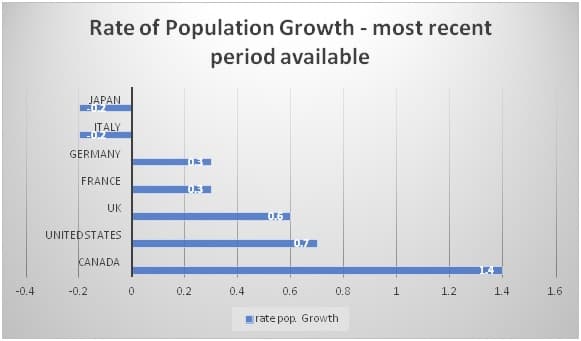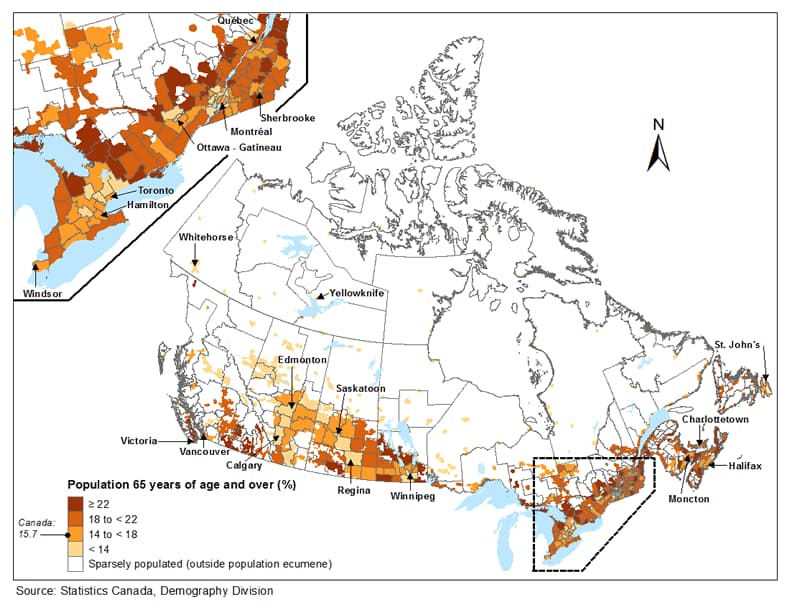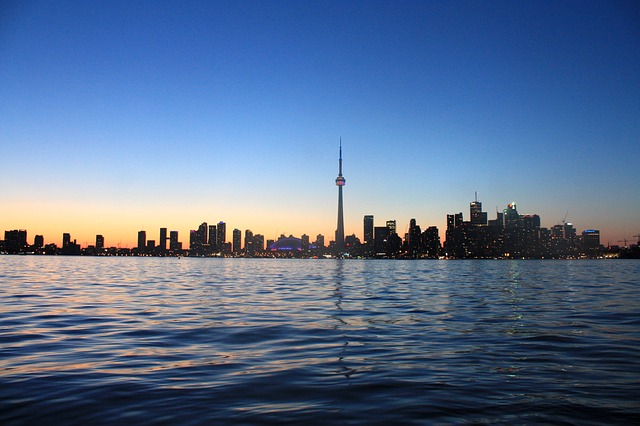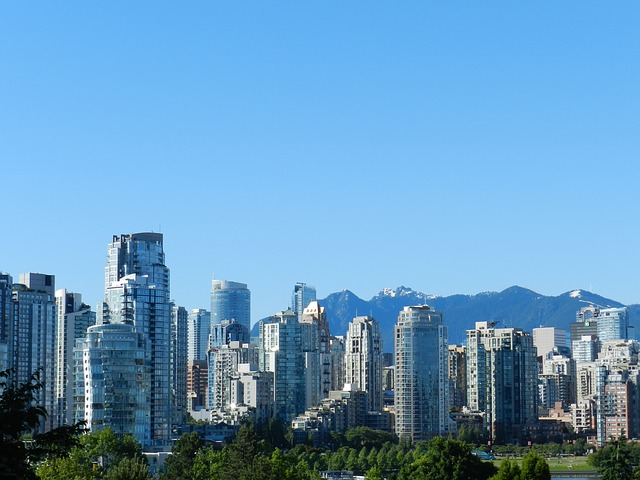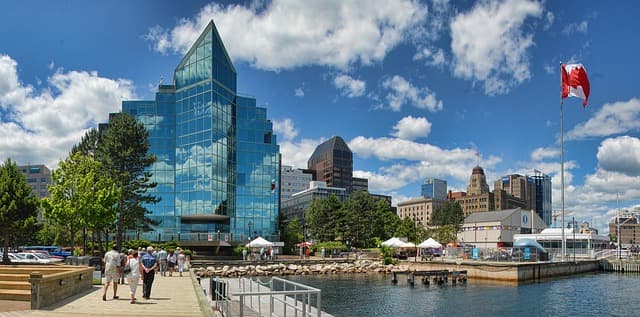100 Million People in Canada in 2100

The Century Initiative, a group of academics, thinkers, businesspeople, and former government officials have revived Wilfred Laurier’s plan with 2100 as the year that Canada reaches the magic number of 100 million inhabitants.
On July 1, 2018 Canada’s population was estimated at 37,058,856 according to Statistics Canada. Moreover, the rate of population growth in Canada has recently risen to the top of it’s G7 group of peers, as shown by the graph below:
[click for larger]How did Canada, with a fertility rate much lower than in the USA and more like its European counterparts, get here?
Immigration obviously.
What do you think Canada’s population was 80 years ago?
Yes, that would be in 1939 as the Globe was increasingly engulfed in WW II. Canada’s population was 11,267,000 with a growth rate of around only 1.0%, as Canada was about to emerge from the depths of the Great Depression and with migratory policies that were still discriminatory, to put it politely.
Dividing 1939’s population by our current population we get the following:
Our current population is about 3.289 times as large as the Dominion’s population in 1939 (as it was called back then). 80 years to grow our population by almost 3 and a third times.
Now ask yourself this:
Where would our population be if we grew at the same average rate over the same number of years going forward? In other words, what would Canada’s total population be in 2100 if we grew 3.289 times?
121,886,577
Insane right? Where will all those people live in our tiny little country? And what kind of crazy growth rates are we going to need to get there? Well, using basically a compound interest formula it works out to just over 1.5% population growth per year. If you decide that caravans of baby boomers passing away will skew our country’s growth rates over the next few decades, you can even go crazy and adjust the average annual population growth rates up to 1.6%. Absolutely nuts!
Ok, you’re still mad that your great grandchildren won’t being able to afford a cottage within a 5-hour drive of Toronto. Welcome to the club, but we’ll grant you 121 million Canadians is a large number. Let’s dial it back to 100 million by the year 2100. What kind of a crazy fool would think of this scheme?
Wilfrid Laurier, for example.
Who? Canada’s seventh prime minister, considered one of the better prime ministers, held the office from 1896 to 1911 and actively encouraged what proportionately were far greater levels of immigration than even nowadays (matching or surpassing current levels on an absolute level on occasion). He envisioned a country of 60 (some sources say up to 100) million inhabitants by the year 2000.
By the time Laurier passed away in February of 1919, however, WW I had shaken belief in progress and peace and the Great Depression and WW II were yet to come. It wouldn’t be until the late 1940s that population growth rates would surge to levels held before WW I. And immigration rates would take longer still to regain or at least approach their former levels.
Over the last several decades, the Canadian government has come to realize that immigration was, is, and will be the solution to Canada’s declining birth rates and the fiscal problems (pensions and healthcare costs primarily) that come along with those declining rates.
Now we have Century Initiative, a group of academics, thinkers, businesspeople, and former government officials who have revived Laurier’s plan with 2100 as the year that Canada reaches the magic number of 100 million inhabitants.
But is it really?
There are several ways to look at Century Initiative’s plan:
- An invasive encroachment by government on how Canadians live and work and where they choose to live;
- A final assault on Canada’s natural wilderness that will help leave the country and the planet overcrowded and polluted beyond any hope of achieving an ecologically balanced way of living; OR
- A modest, slightly wonky attempt to control what none of the older (mostly white and mostly male) wonks will be able to control, seeing they’ll be in their graves by 2050, never mind 2100. But they would love to nudge Canada’s society in their favoured policy directions in terms of how and where we live, work, and play.
But let’s keep one thing in mind, much of the criticism of the Century Initiative is based on how they would go about achieving their goals, turning most urban areas into high density cities that end up looking like Vancouver’s downtown core, for example. The main question to keep in mind is this:
Is the goal of 100 million residents in Canada by 2100 a realistic goal? And is it desirable?
How Many People Does Canada Want?
Percentage of population of Canada 65 years of age or older as of July 2014
According to a study in 2016 by the Conference Board of Canada which provides the basic data for the Centennial Initiative, there are a number of possible scenarios for Canada over the next 80 years.
1. Status Quo Growth Scenario
Canada’s fertility rate is currently 1.55 which means that, assuming the fertility rate remains the same, then the natural rate of population growth (births minus deaths) will turn negative in 2034.
Want a good example of the effects on a wealthy society of falling population rates? Look at Japan over the last generation or so. Empty schools. Single people alone with their devices. Falling rates of marriage. A desperate drive to have automation and artificial intelligence take up the slack. Stagnant financial markets and debt bubbles. Collapsing property bubbles. A stop-go economic growth pattern.
Why hasn’t this already happened in Canada?
Increased immigration levels – something Japan is culturally and politically unwilling to do in order to solve its demographic crisis.
So, assuming Canada’s fertility rate remains around 1.55 and immigration levels remain stable here’s the numbers predicted for 2100 under the status quo scenario:
| Canada’s population in 2100 | 53.7 million |
|---|---|
| Health care spending by 2042 | 44% of government spending (from 37%) |
| Health care spending | Starts falling around 2050 |
| Immigration levels | Rise gradually to 350,000 by 2100 but remain a constant share of population |
| Fertility rate | Remains at 1.55 |
2. Medium Growth Scenario
| Canada’s population in 2100 | 66 million |
|---|---|
| Health care spending by 2045 | Similar to status quo scenario (rising to 44-45% initially) |
| Health care spending | Falls to under 40% around 2070 |
| Immigration levels | Rise to 353,000 by 2030 with population growth slowing to 0.6% over last decades of the 21st century and rising eventually to 500,000 by 2100 |
| Fertility rate | Rises slightly to 1.7 by 2023 |
3. Medium Growth Scenario with Younger Immigrants
| Canada’s population in 2100 | 73.9 million |
|---|---|
| Health care spending by 2045 | Similar to status quo scenario (rising to 44-45% initially) |
| Health care spending | Falls to under 40% around 2070 |
| Immigration levels | Rise to 353,000 by 2030 with population growth slowing to 0.6% over last decades of the 21st century |
| Fertility rate | Rises slightly to 1.7 by 2023 |
4. High Growth Scenario
| Canada’s population in 2100 | 80 million |
|---|---|
| Health care spending by 2045 | Similar to status quo scenario (rising to 44-45% initially) |
| Health care spending | May fall significantly in latter half of 21st century due to greater GDP growth but the 2040s will see similar costs due to baby boomers |
| Immigration levels | Rise to 600,000 by 2100 |
| Fertility rate | Rises significantly to nearly 2% |
5. 100 Million Canadians Scenario
| Canada’s population in 2100 | 100 million |
|---|---|
| Health care spending by 2045 | Similar to status quo scenario (rising to 44-45% initially) |
| Health care spending | Falls as a percentage of Provincial spending to 29% from 34% in the status quo scenario due to robust GDP growth |
| Immigration levels | Rise to 408,000 by 2030 then rise at 2% a year until 2050 when immigration is held at a constant share of the total population (reaching 1,000,000 per year by 2100) |
| Fertility rate | Rises to 1.7% by 2023 and then is held constant |
Will all this planning actually work?
The first thing to notice is that this is a long-term plan by older people who will all be dead within a decade or two. They won’t be around making the key policy decisions in 2050, never mind 2100, although they may influence future policy decisions. However, some of the decisions on immigration and other policies will have to happen within the next few years for the more optimistic scenarios to work out.
Secondly, trying to raise fertility rates in a modern knowledge economy has proven to be difficult if not outright impossible, as evidenced by failed attempts by other OECD economies. Some experts quoted by the Centennial Initiative say we need more detached or semi-detached housing because people in apartments don’t tend to raise many, if any, children. Other experts at the Centennial initiative talk about increasing urban density which means more people living in apartments. Go figure.
In the end, it’s more than likely that fertility rates in Canada will stay relatively low and that immigration rates will have to be even higher than predicted in order to achieve the growth rates that will get Canada to 100 million inhabitants by the end of this century.
What would a 100-million strong Canada be like to live and work in?
Let’s focus on some individual areas of the country:
I: The Greater Toronto Area (GTA)
The population in 2016 was about 6.4 million while Canada’s population was a little over 36 million and the province of Ontario’s population was approaching 14 million. According to the Ontario Government’s studies, the GTA is expected to grow faster than the overall growth rate of Ontario.
| GTA’s share of Ontario’s Population | |
|---|---|
| 1986 | 41.4% |
| 1996 | 43.0% |
| 2006 | 45.8% |
| 2016 | 47.8& |
| 2026 | 49.1% |
| 2036 | 50.5% |
| 2046 | 51.8% |
(Please note that this is by a strict definition of the Greater Toronto Area.)
Ontario currently accounts for more than a third of Canada’s population. Let’s say other areas of Canada start to increase rates of immigration and Ontario slips back to only a third of Canada’s total population by 2100. It could rise dramatically on the other hand, but this is long-term forecasting which is an educated guess at best.
Doing the math, if Canada’s population reached 100 million that would imply Ontario’s population would be around 34 million by 2100 and the GTA would be more than 50% of Ontario’s total, if the GTA continues to grow faster than the rest of Ontario. That would mean a GTA of 17 or more million inhabitants.
17 million residents. Or 18 million. Or more. All dwelling in the GTA.
Would that mean subways would be as packed as Tokyo? Rush hour as bad as Manhattan or worse?
Nonetheless, opportunities for businesses would be perhaps as great as all of Canada back a decade or two, given that incomes should be significantly higher in 2100. In other words, the GDP of Greater Toronto in 2100 with a projected population of 17 or more million may by that time be equivalent to Canada’s GDP in the ‘80s or even the early ‘90s.
II: How about Vancouver?
Could the lower mainland of BC support a city of 12 million? 15 million? Maybe more? Would Victoria become a 2 million-sized suburban city that would for all intents and purposes be part of Metro Vancouver? Imagine with high speed ferries or even a massive bridge from the mainland?
III: Calgary and the Prairies
Calgary might reach 10 million and the prairies from Lethbridge to Winnipeg be populated with medium-sized cities reaching from 500,000 to perhaps 3 to 5 million inhabitants living in Winnipeg.
IV: Montreal’s Census Metropolitan Area and Quebec
Greater Montreal could conceivably top 10 million and even reach 12 or more million. Quebec City could be a 2 to 3 million strong tech and government powerhouse on the St. Lawrence. And at least half a dozen other cities in Quebec would reach the 500,000 mark.
V. The Maritimes
Last but far from least: Halifax has the potential to be more like a northern Boston than the mid-sized city it now is. 2 million? 3 million, anybody? More? With high-speed freight rail connections to Central Canada and New England, it could become a major Atlantic port. And dollars to Tim Hortons donuts, there would be at least one NHL franchise in the Maritimes, something they’ve dreamed of for generations.
- The Saint John’s Storm
- The Halifax Destroyers
- The Moncton Magnets.
Ok. We’re getting a little ahead of ourselves here. But the sky’s the limit if Canada is willing to make some clear policy decisions in the coming years. And yes, living in Canada will be more like Blade Runner than the Beachcombers. It will be a thriving and crowded (in the cities at least) country but one where a national or provincial park is generally only a few hours drive away. And for a lucky few, a prized lakeside cottage might just be possible.
If you can raise the $2.75 million.
